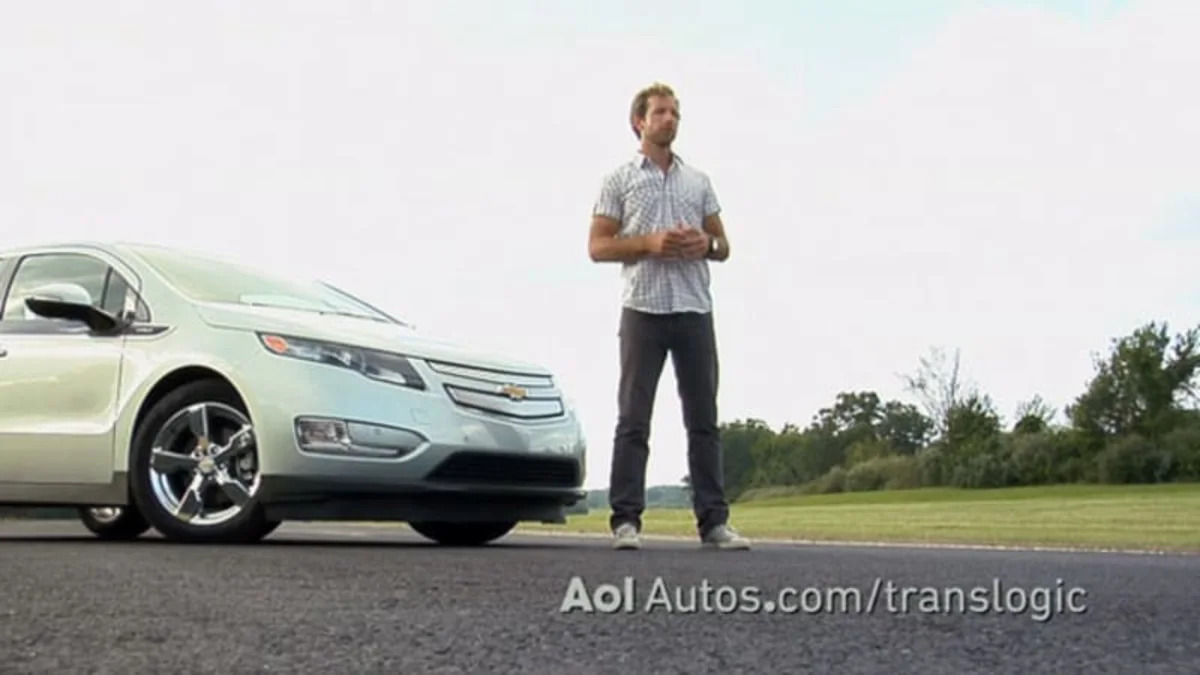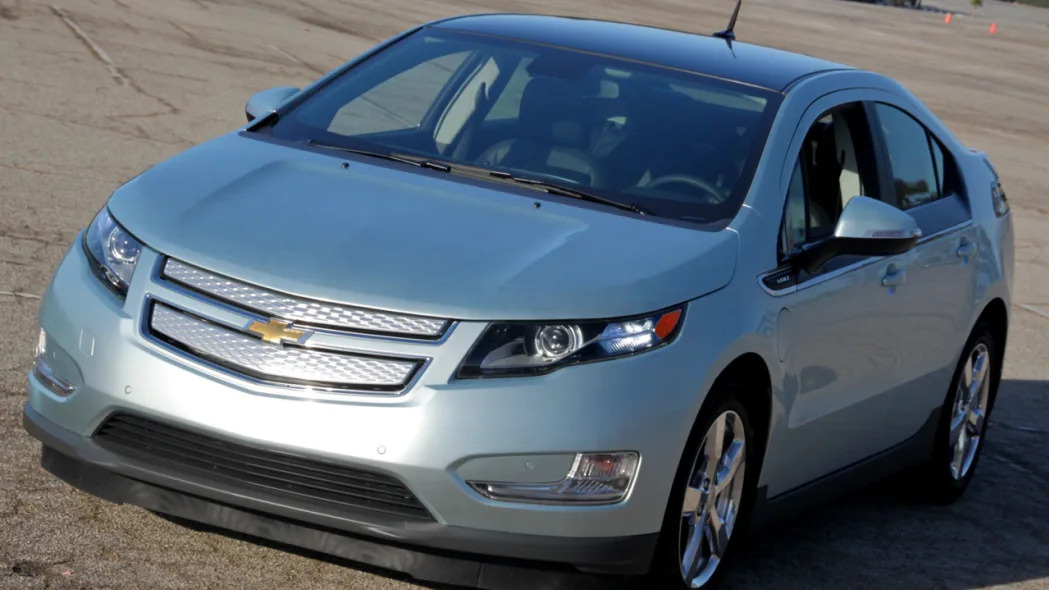Translogic Episode 5.4 – Click above to watch video after the jump
One of the last big technical questions about the 2011 Chevrolet Volt is how much gasoline it will consume when the engine starts up to sustain the charge of the battery. Since the beginning of the development program back in 2007, General Motors has remained extremely reluctant to discuss details about the Volt's fuel efficiency, but a few days ago, the world got its first hint from an outsider.
Previous media drives with the Volt were done with 65 percent calibration level prototypes and we didn't get to see any of the mileage data on the displays. A team from our sister publication, Translogic, recently tried out a newer pilot production car at GM's Milford Proving Ground during a video shoot. Once they ran the battery down, the car continued for another 16.1 miles and apparently used 0.59 gallons of fuel for an average of just 27.3 miles per gallon. Needless to say, that's nowhere near the 50+ mpg that had been surmised from the big 230 mpg announcement a year ago. Read on after the jump for an analysis of what the video crew experienced, as well as the video itself.
[Sources: Plug In Cars, GM-Volt, Translogic]
Chevrolet spokesman Rob Peterson is now denying that the Volt will get sub-30 mpg results in normal charge sustaining driving. According to Peterson "As you can tell from the video itself, the AOL Translogic team ran a battery of aggressive tests with the vehicle including extensive use of Mountain mode, time trials [0-60 mph], [and] aggressive driving maneuvers."
As we are well aware by now, the composite fuel economy for any type of plug-in hybrid vehicle is highly dependent on the driving cycle (how far you go past the charge range). Sticking close to the charge range will obviously realize some huge numbers, but once the engine is running, the numbers drop off quickly. Normally, when the Volt goes into charge-sustaining mode, the engine generator does not re-charge the battery, it just maintains it at 30-35 percent charge. Because the engine/generator only produces about 70 kilowatts, charging the battery back up would require producing the power needed for driving, plus additional power to replenish the battery. This would consume much more energy than than just sustaining the charge and waiting until the car is plugged in to charge it back up to full.
However, if the driver requires some extra power for acceleration or hill climbing, the battery can run down below 30 percent and the range extender will recharge it back to that level. Obviously, that will have the engine running harder – and using more fuel – to maintain the battery.
Going beyond this the Mountain mode increases the battery buffer up to 45 percent so that the Volt will have full power capability when climbing into the mountains. Peterson confirmed to AutoblogGreen this morning that if the driver engages Mountain mode when the battery is still above the 45 percent threshold, there will be "no change in behavior" other than the engine starting sooner as the battery drains. However, if the battery is already very low (as it was during the testing in the video), the engine/generator will start up and actually work to charge the battery back up to 45 percent and then maintain that level.
Ideally, if an owner is expecting to do some mountain driving, he or she would engage Mountain mode before the battery has already been drained. In this scenario, the powertrain will use more fuel as the battery is maintained at a higher level but the engine will not work as hard to recharge it. The battery will also be able to recover more energy from regenerative braking during downhill sections, partially compensating for the extra fuel used during climbing. Just driving around on level ground with mountain mode engaged from a low battery state of charge along with the air conditioning during a humid Michigan summer is a worst case scenario for Volt energy efficiency.
One other item mentioned by Peterson has to do with the numbers used to calculate Translogic's observed 27.3 mpg figure. That magic number was derived by a GM-Volt.com reader that did a screen capture and worked backwards from the 43.7-mile electric range and 59.7 mile total driving range. The problem is that the video crew didn't actually drive that full distance. The energy meter had not been reset prior to the evaluation drive, and as a test vehicle, it's anybody's guess what the vehicle was called upon to perform prior to the video shoot. Further, it's worth noting that EPA test cycles don't include anything close to full-on 0-60 mph acceleration or maximum braking or handling maneuvers. Anyone with a newer car who has a trip computer should be well aware that looking at the mileage readout at any point in time is not necessarily representative of anything over a longer period.
The bottom line is that this video was one snapshot in time without context and we still have no idea what the real world efficiency of a Volt will turn out to be – and we likely won't until at least sometime in late October or November. As the sticker says and the video below proves, "Your mileage may vary."
The video meant to be presented here is no longer available. Sorry for the inconvenience.



Sign in to post
Please sign in to leave a comment.
Continue